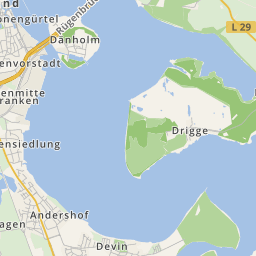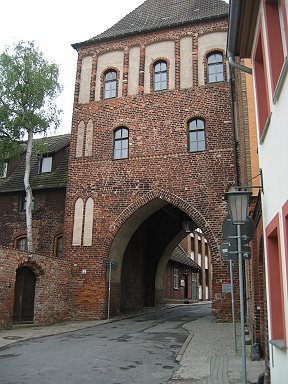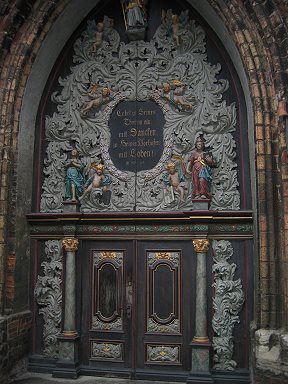












The former monastery of the Dominican mendicant order was founded in 1250. It is one of the biggest monastery grounds and has preserved building parts from the middle ages. Especially remarkable are the two reflectors from the 15.century. It became after the reformation (1525) a school and orphanage. The Katharine monastery is home to the Kulturhistorische Museum (Natural History museum)since 1924 and the Meeresmuseum ( Ocean museum) since 1951. The 72m long early gothic hall church was spoiled in the 17.century through the installation of false floors and the usage as storage room.
The Apollonien chapel is a late gothic octagon building and was build in 1416 as atonement for the burning of 3 clergyman.
The Heilgeist-hospital
The Heilgeist-hospital was build by the city in the 13.century as a shelter for the poor and sick.
Serious damage arose during the thirty-year and the Nordic war. Only the little gothic hall-church survived from medieval times. The atrium with its wooden gallery, supported by pillars is from 17.century.

An historical interesting 'yard' is the Kampische Hof from the 13.century.
A grain silo was added in he middle ages. The facilities was still used as a silo in the aftermath.
The city wall
The city wall was first mentioned in the record books in 1256. Bigger interrelated pieces at the north side of the inner city, especially at the Knieperwall and Fährwall are conserved.
The Knieper gate
The city gate from the year 1293 was restored in 1968. At the inner side is a memorial stone for F.G.v.Petersson, participant at the war of liberation against Napoleon. In 1809 he was shot by the French in front of the Knieper gate.
The Küter gate
It is the city gate from 1281. The name indicates the trade kueter (butcher). In the middle ages they had their abattoir nearby. Its present form goes back to a rebuilding in 1446.